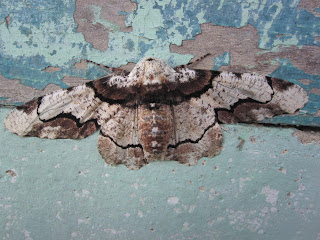Sümi
Many of the oldest oral traditions of the Sümi people of Nagaland have never been documented and are on the verge of disappearing forever. There have been a few anthropologists... ethnographers, researchers from other lands who have documented some aspects our culture at a time when we did not know the importance of nor had the facility and knowledge to do these things. We are truly grateful to those people for the documents, pictures and films they've left us.
A person can write about another person very well if she has the facts and figures and the writing skills yet it is not possible for the writer to completely capture every emotion, every thought or action that runs through another individual's life-time.It is probably time to write and record about ourselves from our own perspective about the people we've been and become to understand ourselves better.
Since ours is an oral tradition without a writing system, all knowledge we have of our past has been verbally transmitted over the ages from one elder to the next purely through the power of memory. There are just a handful of elders left who know the significance of the old Sumi cultural practices such as songs, ceremonial chants, poetry, stories and dances and their importance for our cultural identity, origin, history and everything we are today.
In times like now with rapid globalization and its negative aspects and the obsession with all things foreign including language, literature, philosophy, clothing, food, TV shows, films, buildings, gadgets and a thousand other invasive, non-native species of things and thoughts, an oral culture such as ours with its traditional mode of knowledge transmission hardly stands a chance. We scarcely have the time to sit and listen to stories and songs of old or value what is ours and gone, more importantly to keep alive the things and thoughts that shaped us, while competing with a fast-changing world, trying to carve a niche for ourselves in the quickly-evolving clone cities, towns and villages.
The tragedy is not just about losing track of where we came from, the rituals and customs our grandmothers and grandfathers held dear and the wonderful stories, songs, poetry, war-dances and practices of old as repositories across time of a way of life of a group of people but the real tragedy is about losing ourselves -- about becoming what we are not.
I strongly believe that it is essential to learn about other cultures, respect and recognise the uniqueness of a particular way of life but it is equally important to appreciate and value the differences that make each culture different and to truly love what is our own first, certainly not with a racist agenda but just as different flowers blooming their best adding colour and beauty to a garden. I don't know if we can truly love and respect the great qualities of others if we fail to see and care less for what is our own.
Mother Earth is beautiful and is alive because of the millions of species of plants, trees, flowers, herbs, shrubs, twiners and creepers of all kind each holding a rightful place contributing to the harmony and flow of life. Although beautiful and useful the eucalyptus tree if it were to cover the entire face of the planet annihilating all other species, the Earth would surely lose its charm and the meaning of its very existence.
Preserving the vanishing:
The Sümi Mesho Meghi Küqhakulu and the Sümi Oral Tradition Documentation Team is currently recording folk songs and dances in some of the Sümi Naga villages:
Khükiye & Lukhai
Khükiye & Lukhai Village is 2 kms from Satakha town of Zunheboto District. A village that has grown now to about 170 houses, it was created by two warrior chiefs from the Jimomi Clan - Asüh Khükiye and Asüh Lukhai, hence their namesake. If you're travelling from Kohima to Zunheboto, you will first come across Satakha and then the district headquarters after 20 kms.
Here are pictures of villagers performing agricultural songs - songs related to a specific
season in the Jhum cultivation cycle:
The song is called Thigha leh (breaking up lumps of soil and roots after the forest is cleared and burned down :-( for cultivation). It is sung by women, usually during the month of March.
Lotisa leh - a song for the weeding season when the crops have grown some inches high and it's time to uproot weeds and clean the field. This particular song was learned by K&L villagers from another village some hundreds of years ago and has a really touching story behind it but I'll talk about it in another post. :-)
Thishe Leh - the rice pounding song. There are different variations of Thishe leh, the song sung by K&L village women during our visit talks about a woman not wanting to marry a stranger from a distant village. :O)
Aphilakuwo - this a famous dance performed by the menfolk and it also has a long story behind it that has supernatural influences. I'll do a separate post for this too.
Sükomi Village:
One of the oldest villages in the central Sümi area near Asukhuto Town and around 25 kms from Zunheboto, Sükomi phuh is about 900 years old according to the count of ancestors recorded by the village chiefs and elders.
In the pictures are women of Sükomi in their traditional dresses ready to sing.
Kholakithi in the kitchen: A traditional Naga kitchen with maize drying above the fireplace.


































